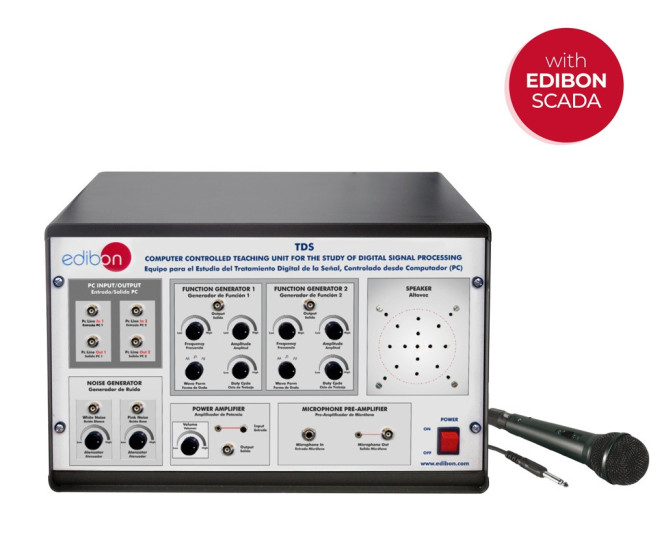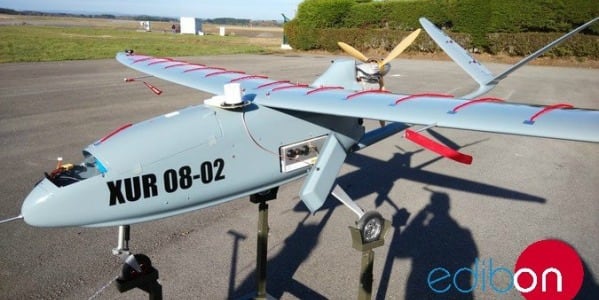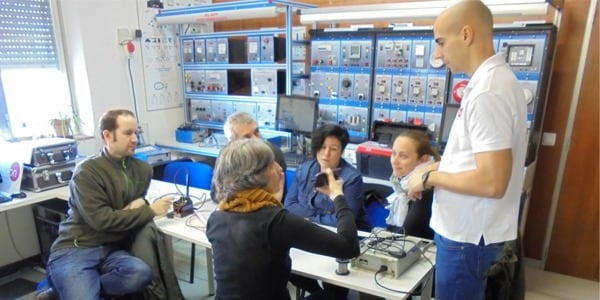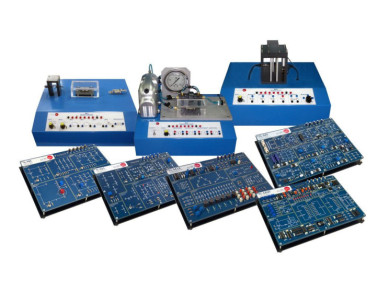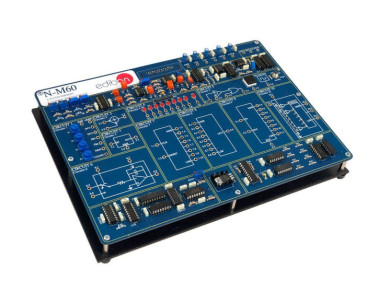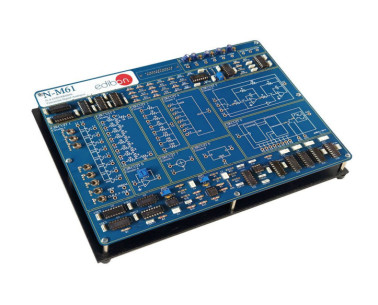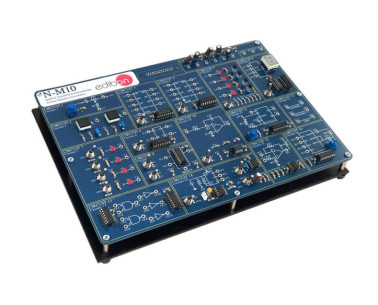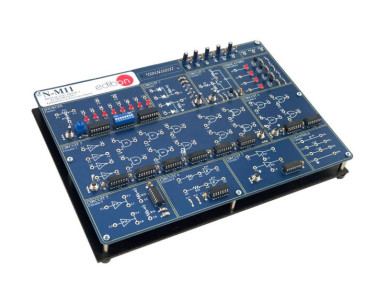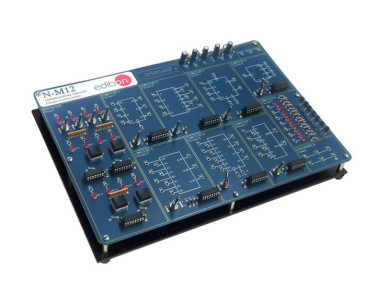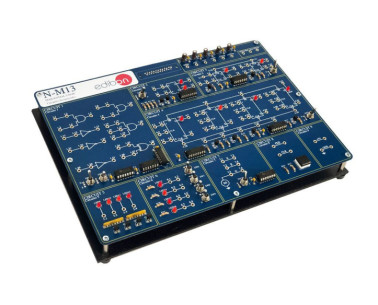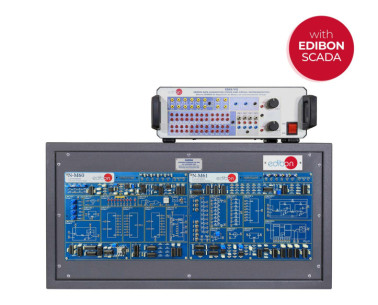TDS Unité pour l´Étude du Traitement Numérique des Signaux, Contrôlée par Ordinateur (PC)
SYSTEMES INNOVANTS
L’Unité pour l´Étude du Traitement Numérique des Signaux, Contrôlée par Ordinateur (PC), "TDS", conçue par EDIBON, permet de comprendre les principes du traitement et de l’analyse du signal numérique.
Expansions
Laboratories
NOUVELLES LIÉES
Description Générale
L’Unité pour l´Étude du Traitement Numérique des Signaux, Contrôlée par Ordinateur (PC), "TDS", conçue par EDIBON, permet d’étudier les principes et les concepts clés du traitement numérique du signal, notamment par des exercices pratiques et des études sur :
- Génération de formes d’onde continues.
- Analyse de la nature des signaux.
- Travail simultané avec deux signaux externes.
- Numérisation des signaux.
- Visualisation de la transformée de Fourier rapide.
- Étude des effets du traitement numérique du signal.
- Étude des effets des filtres analogiques et numériques.
- Analyse des réponses temporelles et fréquentielles, avant et après le traitement numérique du signal.
- Comportement du signal généré ou de la voix de l’utilisateur lorsqu’un bruit y est ajouté.
- De plus, le logiciel permet de générer différentes formes d’onde et de les envoyer aux sorties de l’unité. Ces signaux peuvent être visualisés par un oscilloscope externe ou écoutés par un haut-parleur.
L’unité "TDS" est basée sur une structure modulaire pour une meilleure compréhension de l’unité. Cette unité comprend les modules suivants :
- Deux modules générateurs de fonctions : Chaque générateur de fonctions comprend un sélecteur de forme d’onde permettant de choisir l’une des trois formes d’onde (sinusoïdale, triangulaire et carrée) et trois potentiomètres permettant de régler la fréquence, l’amplitude et le rapport cyclique du signal.
- Module générateur de bruit : Il comprend deux générateurs de bruit : bruit blanc et bruit rose. Chaque générateur de bruit comprend un potentiomètre permettant de régler l’amplitude du signal de bruit.
- Module microphone et préamplificateur de microphone : Il permet d’enregistrer et d’adapter la voix de l’utilisateur pour l’analyser avec le logiciel de l’unité.
- Module entrées/sorties PC : Il permet de connecter l’unité à la carte d’acquisition de données (à installer dans l’ordinateur) et d’afficher les signaux acquis dans le logiciel de l’unité. Ce module comprend deux connecteurs BNC pour les entrées et deux connecteurs BNC pour les sorties.
- Module amplificateur de puissance : Il contient un potentiomètre permettant de régler l’amplification du signal.
- Module haut-parleur : Il permet d’écouter les signaux générés par l’appareil et d’étudier les effets du bruit et du traitement numérique du signal étudié.
- Toutes les connexions entre les modules sont réalisées via un câble coaxial RF.
Cette Unité Contrôlée par Ordinateur est fournie avec le Système de Contrôle par Ordinateur EDIBON (SCADA), et comprend: l’Unité elle-même + une Carte d’Acquisition de Données + des Progiciels de Contrôle par Ordinateur, d’Acquisition de Données et de Gestion de Données, pour contrôler le processus et tous les paramètres impliqués dans le processus.
Des exercices et pratiques guidées
EXERCICES GUIDÉS INCLUS DANS LE MANUEL
- Génération de formes d’onde continues, avec possibilité de variation de la fréquence et de l’amplitude des signaux, ainsi que du rapport cyclique.
- Caractérisation des signaux. Analyse de la nature des signaux : sinusoïdaux, carrés, triangulaires, etc.
- Travail simultané avec deux signaux externes.
- Génération directe des signaux par le logiciel, envoi aux sorties de l’appareil, puis visualisation ou écoute par haut-parleur ou oscilloscope externe.
- Numérisation des signaux, permettant le temps d’échantillonnage le plus adapté et évitant le repliement.
- Numérisation des signaux avec possibilité de réglage de la fréquence d’échantillonnage.
- Transformées de Fourier rapides (spectre de puissance).
- Addition, soustraction et multiplication de signaux.
- Étude du repliement.
- Étude de différents types de bruit :
- Bruit blanc.
- Bruit 1/ƒ.
- Étude et utilisation des filtres :
- Possibilité de filtrer tout signal.
- Reconstruction de signaux par application de filtres.
- Filtres numériques : Filtres à réponse impulsionnelle finie (FIR) et filtres à réponse impulsionnelle infinie (RII).
- Filtres analogiques :
- Butterworth, Chebyshev, etc.
- Possibilité d’utiliser les fenêtres de Bartlett, Hanning, Hamming, Kaiser, Parzen, etc. pour l’application sur le signal.
PLUS D'EXERCICES PRATIQUES À EFFECTUER AVEC CETTE ÉQUIPEMENT
- De nombreux étudiants voient les résultats simultanément. Pour voir tous les résultats en temps réel dans la classe au moyen d'un projecteur ou d'un tableau blanc électronique.
- Contrôle Ouvert, Multicontrôle et Contrôle en Temps Réel. Cette unité permet intrinsèquement et/ou extrinsèquement de changer la durée, les gains, paramètres proportionnels, intégraux, dérivés, etc. en temps réel.
- Le Système de Contrôle Informatique avec SCADA permet une véritable simulation industrielle.
- Cette unité est totalement sûre car elle utilise des dispositifs de sécurité mécaniques, électriques et électroniques.
- Cette unité peut être utilisée pour faire de la recherche appliquée.
- Plusieurs autres exercices peuvent être faits et conçus par l'utilisateur.
EQUIPEMENT COMPLEMENTAIRE
Module de Convertisseurs Analogiques/Numériques
Module de Convertisseurs Numériques/Analogiques
Module de Systèmes Numériques et Convertisseurs
Module de Base de l'Électronique Numérique
Module de Circuits Combinatoires de Base
Module de Circuits Séquentiels de Base
Unité de Conversion A/D et D/A, Contrôlée par Ordinateur (PC)
Qualité

Service après vente

 Préférences sur les cookies
Préférences sur les cookies

